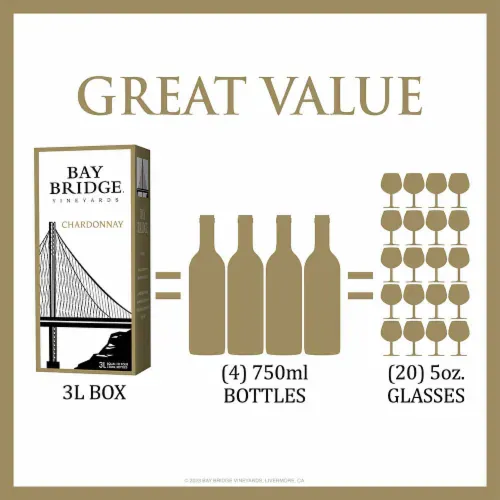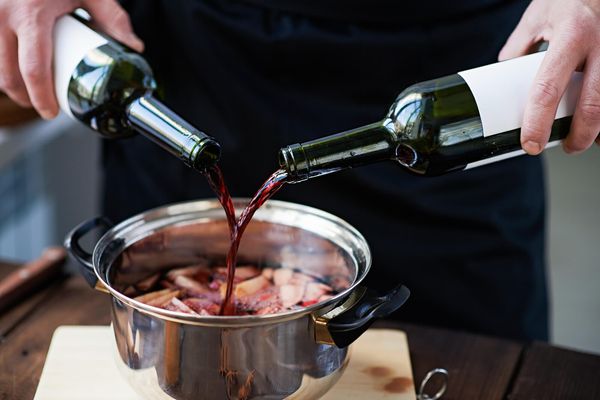Wine and beer are two of the most popular alcoholic beverages in the world. Both of them have been enjoyed for centuries and are an important part of many cultures. However, there are some significant differences between the two, including their alcohol content.
Wine generally has a higher alcohol content than beer. According to Liquor Laboratory, the average alcohol content for wine ranges between 11 percent to 13 percent, while standard beers have an average of 5% ABV. However, it is important to note that different types of wine can have varying alcohol content, with some wines having as little as 5% ABV and others as high as 23% ABV.
Understanding the alcohol content of wine and beer is important for several reasons. Firstly, it can help individuals make informed decisions about their drinking habits, as consuming too much alcohol can have negative health consequences. Additionally, knowing the alcohol content of a drink can help individuals pace themselves and avoid overconsumption. Overall, while both wine and beer can be enjoyed in moderation, it is important to be aware of their alcohol content and drink responsibly.
Understanding Alcohol Content
Alcohol content is an important aspect to consider when choosing between wine and beer. The alcohol content is usually measured as a percentage of alcohol by volume (ABV) or as the amount of pure alcohol in a drink.
In the United States, a standard drink contains approximately 14 grams of pure alcohol, which is equivalent to 12 ounces of regular beer, 5 ounces of wine, or 1.5 ounces of distilled spirits. However, it is important to note that the actual amount of alcohol in a drink can vary depending on the type of alcohol and the serving size.
Wine usually has a higher alcohol content than beer. The average alcohol content for wine ranges between 11 percent to 13 percent, while standard beers have an average of 5% ABV. However, some types of wine can have an ABV ranging from 5% to 23%. Wines produced in cooler regions like New Zealand and Germany have lower alcohol content, while those produced in warmer areas have higher alcohol content.
Beer, on the other hand, has a lower alcohol content than wine. The alcohol content in beer can range from 2% to 12%, with the average being 5% ABV. Light beers usually have a lower alcohol content than regular beers, with an average of 4.2% ABV.
It is important to understand the alcohol content of alcoholic beverages because it affects blood alcohol concentration (BAC). BAC is the amount of alcohol in a person's bloodstream, and it is affected by the amount of alcohol consumed, the alcohol content of the beverage, and the rate at which the alcohol is consumed. High BAC levels can impair judgment, coordination, and reaction time, which can lead to accidents and other negative consequences.
In summary, wine generally has a higher alcohol content than beer, but the actual alcohol content can vary depending on the type of alcohol and the serving size. It is important to understand the alcohol content of alcoholic beverages and its effects on BAC to make informed decisions about drinking.
Wine and Its Alcohol Content
Wine is an alcoholic beverage made from fermented grapes. The alcohol content in wine can vary depending on the type of wine, the grapes used, and the region where it is produced. Generally, the alcohol content in wine ranges from 5% ABV to 23% ABV.
Red wine and white wine have different alcohol content levels. Red wines usually have a higher alcohol content than white wines. For example, a full-bodied red wine like Shiraz can have an alcohol content of up to 16% ABV, while a light white wine like Pinot Grigio typically has an alcohol content of around 12% ABV.
Fortified wines like Port, Sherry, Madeira, and Vermouth have a higher alcohol content than regular wines as they are fortified with brandy or other spirits. The alcohol content in fortified wines can range from 18% ABV to 22% ABV.
Marsala is a fortified wine from Sicily that has an alcohol content ranging from 15% ABV to 20% ABV. Chardonnay, a popular white wine, has an alcohol content ranging from 13% ABV to 15% ABV. Malbec, a full-bodied red wine, has an alcohol content ranging from 13.5% ABV to 15% ABV.
Moscato d'Asti is a sweet, sparkling white wine with a low alcohol content of around 5-6.5% ABV. Sauvignon Blanc, another popular white wine, has an alcohol content ranging from 12.5% ABV to 13.5% ABV. Zinfandel, a red wine, has an alcohol content ranging from 14% ABV to 17% ABV.
The alcohol content in wine is determined by the fermentation process. During fermentation, yeast converts the natural sugars in grapes into alcohol. The longer the fermentation process, the higher the alcohol content in the wine.
In conclusion, the alcohol content in wine can vary greatly depending on the type of wine, the grapes used, and the fermentation process. It is important to be aware of the alcohol content in wine when consuming it to avoid overconsumption.
Beer and Its Alcohol Content
Beer is a popular alcoholic beverage made from malted barley, hops, water, and yeast. It is known for its bitter taste and carbonation. Beer is available in various types, including ale, lager, stout, and malt liquor, among others.
The alcohol content of beer varies widely depending on the type of beer. Regular beer typically contains around 5% alcohol by volume (ABV), while light beer has a lower alcohol content of 4% ABV. Craft beers, on the other hand, can have higher alcohol percentages, ranging from 8% to 12% ABV and even higher.
Malt liquor is a type of beer that has a higher alcohol content than regular beer. It typically contains around 7% ABV, which is higher than the average alcohol content of regular beer. Malt liquor is often sold in larger containers, such as 40-ounce bottles, and is popular among young adults and college students.
Brewing beer involves a complex process that includes malting, mashing, boiling, fermenting, and conditioning. Hops are added during the boiling process to provide bitterness and flavor to the beer. The bitterness of beer is measured in International Bitterness Units (IBUs), with higher IBUs indicating a more bitter taste.
Overall, beer is a popular alcoholic beverage with a wide range of alcohol content depending on the type of beer. It is a staple at many social gatherings and is enjoyed by millions of people worldwide.
Comparing Wine and Beer
When it comes to alcohol content, wine and beer are two popular drinks that people often compare. While both beverages contain alcohol, they differ in many ways, including their alcohol content, flavor, and serving sizes.
Alcohol Content
Wine generally has a higher alcohol content than beer. The average alcohol content for wine ranges between 11 percent to 13 percent, while standard beers have an average of 5% ABV. Different types of wine can have 5% ABV to 23% ABV. It means the wine is rich in alcohol, and that is the reason why it has a more pronounced flavor and effect as compared to beer. However, it is important to note that the alcohol content of wine can vary depending on the type of wine, the fermentation process, and the serving size.
Flavor
Wine and beer also differ in their taste and flavor. Wine is typically made from fermented grapes, which can give it a fruity or earthy flavor, depending on the type of grape used. On the other hand, beer is made from fermented grains, such as barley and hops, which can give it a bitter or malty flavor. Both wine and beer can be paired with food, but the flavor of the drink should complement the taste of the food.
Serving Sizes
The serving size for wine and beer also differs. A typical bottle of wine contains 750 ml of liquid, which is equivalent to five 5-ounce servings. In contrast, a standard beer bottle contains 12 ounces of liquid, which is equivalent to one serving. It is important to note that the alcohol content of the drink is directly proportional to the serving size. The larger the serving size, the higher the alcohol content.
In conclusion, wine and beer are two popular alcoholic beverages that differ in many ways, including their alcohol content, flavor, and serving sizes. While wine generally has a higher alcohol content than beer, both drinks can be enjoyed in moderation and paired with food to enhance their flavor.
Other Alcoholic Beverages
While wine and beer are two of the most popular alcoholic beverages, there are many other types of alcoholic drinks available. Here are some of the most common types of alcoholic beverages and their alcohol content:
Gin
Gin is a distilled spirit that is made from juniper berries. It has a relatively high alcohol content, typically ranging from 35% to 50% ABV. Some of the most popular gin cocktails include the gin and tonic, the negroni, and the martini.
Liquor
Liquor is a broad term that refers to any distilled spirit that is not classified as whiskey, gin, or vodka. Some common types of liquor include rum, tequila, and brandy. The alcohol content of liquor can vary widely, with some types having an ABV of 40% or higher.
Distilled Spirits
Distilled spirits are any type of alcoholic beverage that is made by distilling a fermented mixture. This includes whiskey, vodka, gin, and rum. The alcohol content of distilled spirits can vary widely, with some types having an ABV of 40% or higher.
Whiskey
Whiskey is a type of distilled spirit that is made from fermented grain mash. There are many different types of whiskey, including bourbon, rye, and scotch. The alcohol content of whiskey can vary widely, with some types having an ABV of 40% or higher.
Vodka
Vodka is a distilled spirit that is made from potatoes, grains, or other starchy plants. It has a relatively high alcohol content, typically ranging from 35% to 50% ABV. Some popular vodka cocktails include the Moscow mule, the Bloody Mary, and the screwdriver.
Tequila
Tequila is a type of distilled spirit that is made from the blue agave plant. It has a relatively high alcohol content, typically ranging from 35% to 50% ABV. Some popular tequila cocktails include the margarita, the paloma, and the tequila sunrise.
Rum
Rum is a type of distilled spirit that is made from sugarcane or molasses. It has a relatively high alcohol content, typically ranging from 35% to 50% ABV. Some popular rum cocktails include the daiquiri, the piña colada, and the mojito.
Liqueur
Liqueur is a type of sweetened distilled spirit that is flavored with herbs, fruits, or other natural ingredients. Some common types of liqueur include amaretto, triple sec, and Bailey's Irish Cream. The alcohol content of liqueur can vary widely, with some types having an ABV of 20% or higher.
Bourbon
Bourbon is a type of whiskey that is made from at least 51% corn. It has a relatively high alcohol content, typically ranging from 40% to 50% ABV. Some popular bourbon cocktails include the old fashioned, the mint julep, and the whiskey sour.
Cask Strength Whiskey
Cask strength whiskey is a type of whiskey that is bottled directly from the barrel without any dilution. It has a very high alcohol content, typically ranging from 50% to 70% ABV. Some popular cask strength whiskey brands include Booker's, Stagg Jr., and Lagavulin 12 Year Old.
Scotch
Scotch is a type of whiskey that is made in Scotland. It has a relatively high alcohol content, typically ranging from 40% to 50% ABV. Some popular scotch cocktails include the Rob Roy, the rusty nail, and the blood and sand.
Health Implications
While both wine and beer contain alcohol, there are some differences in their health implications. Moderate alcohol consumption, which is defined as up to one drink per day for women and up to two drinks per day for men, has been associated with a lower risk of heart disease and stroke. However, excessive alcohol consumption can lead to a range of negative health outcomes, including alcoholism, liver disease, and certain types of cancer.
When it comes to nutrition, wine and beer both contain calories, but wine generally has fewer calories per serving than beer. For example, a 5-ounce glass of wine typically contains around 120 calories, while a 12-ounce beer can contain anywhere from 100 to 300 calories or more, depending on the type of beer. Wine also tends to be lower in sugar and fat than beer.
In terms of restlessness and dependency, excessive alcohol consumption can lead to both physical and psychological dependence. Drinking too much can also disrupt sleep patterns and lead to feelings of anxiety and restlessness. Additionally, excessive alcohol consumption can lead to a hangover, which can be characterized by symptoms such as headache, nausea, and fatigue.
When it comes to obesity, excessive alcohol consumption can contribute to weight gain and increase the risk of obesity. This is because alcohol contains empty calories, meaning that it provides calories without any nutritional value. However, moderate alcohol consumption has not been shown to increase the risk of obesity.
It's important to note that what counts as a drink can vary depending on the type of alcohol. For example, a standard drink of wine is typically 5 ounces, while a standard drink of beer is 12 ounces. It's also worth noting that wine contains a range of nutrients, including folate, niacin, and fiber, while beer is a good source of protein and certain minerals such as magnesium and potassium. Both wine and beer also contain antioxidants that can help protect against LDL cholesterol and other harmful substances.
Overall, while moderate alcohol consumption can have some health benefits, excessive alcohol consumption can lead to a range of negative health outcomes. It's important to drink in moderation and to be aware of the potential risks associated with excessive alcohol consumption.
The Brewing and Aging Process
Beer and wine are both alcoholic beverages, but their brewing and aging processes are quite different.
Brewing Process
Brewers make beer by fermenting malted grains, such as barley or wheat, with yeast and water. The yeast consumes the sugars in the malted grains, producing alcohol and carbon dioxide. The brewer can control the alcohol content by adjusting the amount of sugar in the wort, which is the liquid extracted from the malted grains.
Wine, on the other hand, is made by fermenting grapes or other fruits. The fruit sugars are naturally present in the grapes, so the winemaker doesn't need to add any sugar to the must, which is the juice extracted from the grapes. The yeast consumes the fruit sugars, producing alcohol and carbon dioxide. The winemaker can control the alcohol content by selecting the grape variety and the level of ripeness at harvest time.
Aging Process
Beer and wine both benefit from aging, but the effects are different.
Beer is typically aged for a few weeks to a few months, depending on the style. During this time, the yeast continues to work, consuming any residual sugars and creating new flavors and aromas. The beer may also absorb flavors from any adjuncts, such as fruit or spices, that were added during the brewing process.
Wine, on the other hand, is usually aged for months or even years, depending on the style. During this time, the wine undergoes a complex series of chemical reactions that can soften the tannins, develop the aromas, and enhance the flavors. The wine may also absorb flavors from the oak barrels or other vessels in which it is aged.
In conclusion, the brewing and aging processes for beer and wine are quite different. Brewers use malted grains, yeast, and water to create beer, while winemakers use grapes or other fruits. Beer is typically aged for a few weeks to a few months, while wine is aged for months or even years. The aging process for beer and wine produces different flavors and aromas, making them distinct from each other.
Alcohol Content in the United States
In the United States, alcohol content is measured in terms of the percentage of alcohol by volume (ABV) or proof. The ABV of a beverage is the percentage of alcohol contained in it. For example, a 12-ounce beer with 5% ABV contains 0.6 ounces of alcohol. Similarly, a 5-ounce glass of wine with 12% ABV contains 0.6 ounces of alcohol.
According to the National Institute on Alcohol Abuse and Alcoholism (NIAAA), a standard drink contains around 14 grams (0.6 ounces) of pure alcohol. In the United States, one "standard" drink (or one alcoholic drink equivalent) contains roughly 14 grams of pure alcohol, which is found in:
- 12 ounces of regular beer, which is usually about 5% alcohol
- 5 ounces of wine, which is typically about 12% alcohol
- 1.5 ounces of distilled spirits, which is about 40% alcohol
It's important to note that different types of beer and wine can have varying alcohol content. For example, some craft beers can have an ABV as high as 10% or more, while some wines can have an ABV as high as 23%.
The NIAAA recommends that men consume no more than four drinks per day and no more than 14 drinks per week, while women consume no more than three drinks per day and no more than seven drinks per week. These guidelines are based on the standard drink sizes mentioned above.
However, it's important to keep in mind that these guidelines are just that – guidelines. The effects of alcohol can vary depending on factors such as age, weight, and overall health. Additionally, the NIAAA recommends that individuals who are pregnant, have a history of alcoholism, or are taking certain medications should avoid alcohol altogether.
Overall, it's important to be aware of the alcohol content of the beverages you're consuming and to drink in moderation in order to maintain good health. The NIAAA's Rethinking Drinking campaign provides additional information and resources for those looking to learn more about responsible drinking habits.









Member discussion